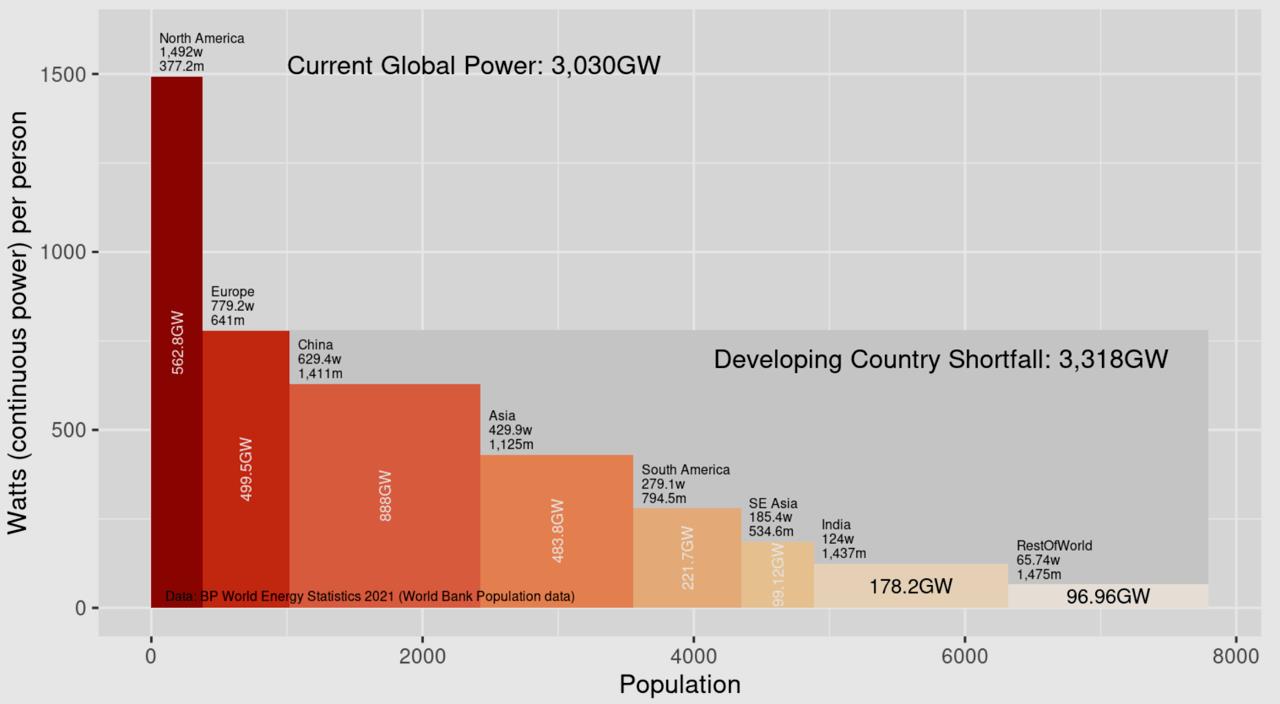(MENAFN- Asia Times) The following article was written for Asia Times by Robert Hargraves, a cofounder of the company ThorCon, which has scaled up technology pioneered by US Oak Ridge National Laboratory to design the government-supported plant.
The safety properties of the molten salt reactor design that ThorCon is using are well-known , and it is credible that those features make running the reactor easier. (- Jonathan Tennenbaum, science editor)
The distorted map below illustrates the world's nations, not by area, but by population. Indonesia (in green) uses only a seventh of the per capita energy the US does, and India even less. Will CO2 emissions rise as such populous nations develop?

Map of nations, scaled by population size. Image: Our World in Data / Creative Commons
Wealthy United States and Europe, which consume energy by burning fuels and emitting CO2, now want to reduce their emissions. They import energy-intensive products from developing nations such as Indonesia, increasing those nations' needs for energy and electric power.
Burning fuels for energy increases those nations' CO2 emissions. Perversely, Europe is starting to tax exports from these nations proportionate to the CO2 emitted in manufacturing.
People in these populous nations aspire to the living standards of the rich US and EU nations. They will use more energy and especially electricity to build their economies, trade competitively with rich nations and increase citizens' incomes. For them to reach European standards, world electricity consumption must double.

Global electric power per capita, by region
The height of each block represents the average electric power consumption per capita. The width is proportional to the regional population, so the area represents regional average electric power use. Graph courtesy of
ThorCon
and Geoff Russell. Energy for economic development The emerging economies build coal-fired and liquified natural gas (LNG)-fired power plants because these are the least expensive ways to generate full-time, reliable electricity for commerce and industry. They need to optimize scarce capital to power up their economies.
To reduce global CO2 emissions, we must incentivize developing nations to choose electric power sources that emit little CO2. But at present coal-fired generation is the cheapest option for them.
Advocates claim wind and solar power generation is cheaper. But that has not worked out, in practice, simply because those energy sources are dispersed and intermittent. Wind is not strong in equatorial Indonesia. Solar panels produce intermittent daytime energy and no nighttime energy.
It's not possible to run industries such as mining or smelting or chemical manufacturing with intermittent energy. These activities require continuous power, at levels that batteries can not provide.
Grid-scale batteries cost US$500 for capacity to store each kilowatt hour of electric energy, typically generated for about $0.03 to $0.10. Google abandoned its RE<C project in 2011, concluding renewable energy could not economically replace coal.
Like Iceland, Indonesia has some limited opportunities for dispatchable geothermal energy because it sits on a geologic“ring of fire.” Geothermal power contributes about 3% of Indonesia's total generation capacity of 62 GW.
MENAFN29112023000159011032ID1107505695
Legal Disclaimer:
MENAFN provides the information “as is” without warranty of any kind. We do not accept any responsibility or liability for the accuracy, content, images, videos, licenses, completeness, legality, or reliability of the information contained in this article. If you have any complaints or copyright issues related to this article, kindly contact the provider above.